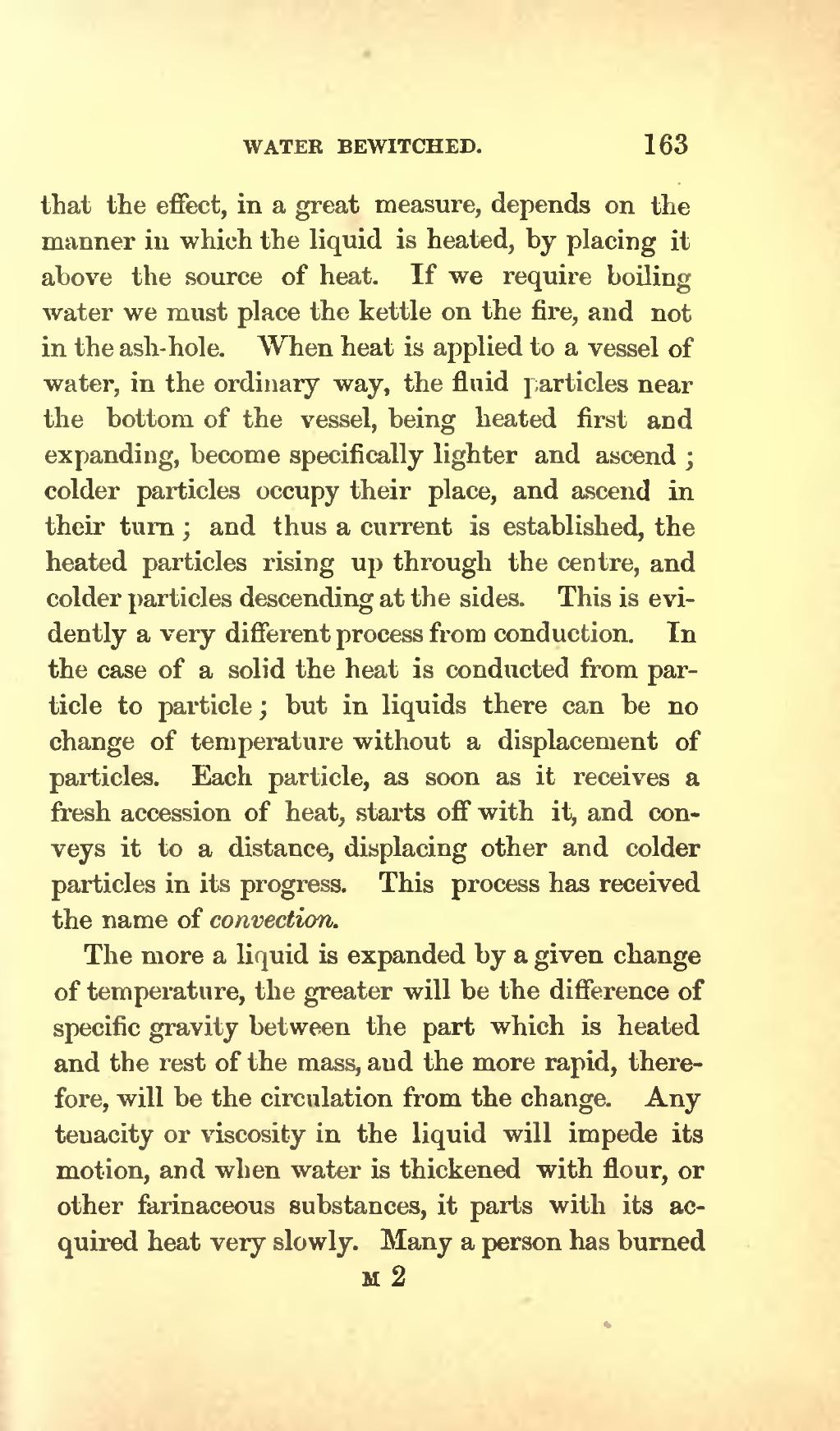that the effect, in a great measure, depends on the manner in which the liquid is heated, by placing it above the source of heat. If we require boiling water we must place the kettle on the fire, and not in the ash-hole. When heat is applied to a vessel of water, in the ordinary way, the fluid particles near the bottom of the vessel, being heated first and expanding, become specifically lighter and ascend; colder particles occupy their place, and ascend in their turn; and thus a current is established, the heated particles rising up through the centre, and colder particles descending at the sides. This is evidently a very different process from conduction. In the case of a solid the heat is conducted from particle to particle; but in liquids there can be no change of temperature without a displacement of particles. Each particle, as soon as it receives a fresh accession of heat, starts off with it, and conveys it to a distance, displacing other and colder particles in its progress. This process has received the name of convection.
The more a liquid is expanded by a given change of temperature, the greater will be the difference of specific gravity between the part which is heated and the rest of the mass, and the more rapid, therefore, will be the circulation from the change. Any tenacity or viscosity in the liquid will impede its motion, and when water is thickened with flour, or other farinaceous substances, it parts with its acquired heat very slowly. Many a person has burned
